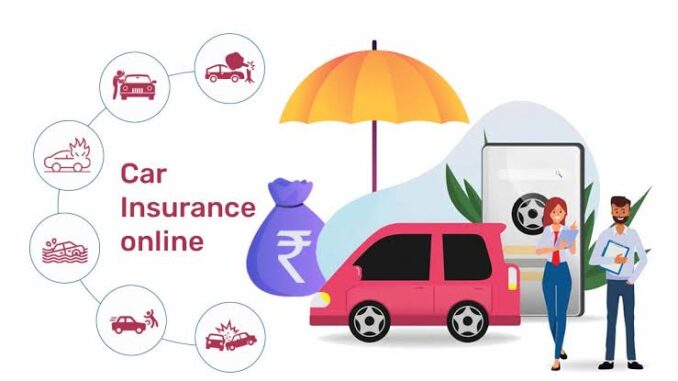
Save Time, Save Money: Why Insurance Consolidation Matters
In a world where every minute counts, finding smart ways to protect your finances—and your peace of mind—has never been more important. That’s why consolidating your home and auto insurance is a game-changer. Whether you’re a first-time homeowner, an experienced driver, or both, combining policies is now easier than ever. And the best part? You can get a quote in minutes.
This guide breaks down everything you need to know about online pooled insurance: how it works, what to expect, the documents you need, and how to start saving money today. If you’re ready to simplify your coverage and put more money in your pocket, you’ve come to the right place.
Why combine home and auto insurance?
Combining isn’t just convenient—it can unlock serious savings and enable smoother policy management.
Top reasons to pair up:
- Save 25% or more.
- If both the house and the car are damaged, only one can be deducted.
- One bill, one due date—less to remember.
- Process claims faster with a single touch.
- Tailor your policy to fit your lifestyle and budget.
How to Get a Home and Auto Insurance Quote in Minutes
Step 1: Gather your information
Before you get a quote, have this ready:
- Name, address, and date of birth
- Driver’s license number
- Car details: Make, model, year, VIN (if you have one)
- House details: type, year built, size, materials
- Current insurance information (if you are switching providers)
Step 2: Compare providers
You don’t have to shop around yourself. Use these comparison tools:
- Policy genius
- Zebra
- Please provide insurance.
- Compare.com
They allow you to compare coverage, costs, and discounts side by side.
Step 3: Customize your coverage and tailor the policy to your needs:
- Choose your deductible (higher deductible = lower cost)
- Set your coverage limits.
- Add extras like roadside assistance or flood coverage.
Pro tip: Always check the “bundle” or “multi-policy” box to see savings across bundles.
Step 4: Review and Purchase
When you are satisfied with the quote, purchase the policy online. Typically, you will receive:
- Relevant evidence
- Online policy management
- Mobile devices for updates and requests
- The coverage you really need
Homeowner’s insurance:
- Home: Repairing a home after damage (fire, storm, etc.)
- Personal property: Protects belongings.
- Liability: If someone is injured on your property.
- Loss of use: Pays for temporary housing.
- Optional: Flood, Earthquake, Umbrella Insurance
Auto insurance
- Liability: Covers injuries/damages you cause.
- Car accident: Repairs from car accidents.
- Comprehensive: Covers theft, storms, vandalism.
- Uninsured/underinsured driver: Protects others if they don’t have coverage.
- Optional: Rental car coverage, roadside assistance, gap insurance
Best Insurance Companies for Bundled Quotes (2025)
| Sponsor | Average discount | Features |
|---|---|---|
| State Farm | Up to 17% | Local agents, wide coverage |
| Progressive | Up to 25% | Instant savings plan |
| Allstate | Up to 25% | Rewards without requests |
| Freedom and reciprocity | Up to 20% | Flexible package options |
| GEICO | Up to 25% | Fast prices, competitive prices |
| Farmer | Up to 18% | Please excuse the add-ons, claims. |
Bonus tip: Some insurers offer bigger discounts if you add life, renters, or umbrella coverage.
How much can you save by bundling?
Savings vary by location and personal details, but most people can save $500 to $1,200 annually.
For example:
- Separate auto: $1,400 per year
- Detached house: $1,200/year
- Total Packaged: ~$1,950/year
- Savings: $650/year
Common questions
- Does a quote affect my credit?
No—insurers use flexible leverage, which doesn’t affect your score. - Can I get a quote without buying?
I asked. There is no pressure to commit. - If I already have a policy, can I consolidate it later?
Yes, you can add another policy at any time and apply the bundle discount. - Is it safe to buy insurance online?
Yes — only use secure, encrypted websites from reputable providers. - How often should you check your references?
Every 6-12 months, or after major life events like moving or buying a new car.
Are you ready to get started?
🔹 Step 1: Use a secure reference tool:
Compare it to a zebra.
Start your quote on Policygenius.
🔹 Step 2: Choose your provider and customize your plan
🔹 Step 3: Pay online and enjoy instant coverage.
Final Thoughts: Don’t Wait to Save
If you’re a homeowner and a driver, bundling your insurance could put hundreds back into your wallet a year. It’s fast, safe, and incredibly easy. Take a few minutes today to compare and review.
✅ Get your home and auto insurance quote in minutes – start here.
Start my free quote now.
Compare and save the sets.
Leave a Reply